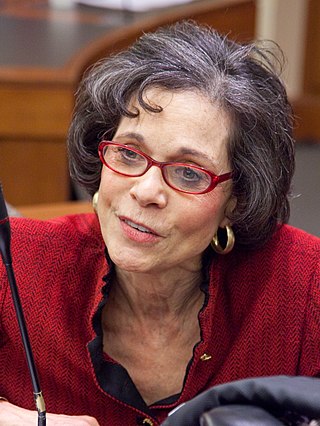| |||
|---|---|---|---|
| +... |
This is a list of notable events relating to the environment in 1948. They relate to environmental law, conservation, environmentalism and environmental issues.

Environmental laws are laws that protect the environment. Environmental law is the collection of laws, regulations, agreements and common law that governs how humans interact with their environment. This includes environmental regulations; laws governing management of natural resources, such as forests, minerals, or fisheries; and related topics such as environmental impact assessments. Environmental law is seen as the body of laws concerned with the protection of living things from the harm that human activity may immediately or eventually cause to them or their species, either directly or to the media and the habits on which they depend.

Pollution is the introduction of contaminants into the natural environment that cause adverse change. Pollution can take the form of any substance or energy. Pollutants, the components of pollution, can be either foreign substances/energies or naturally occurring contaminants.

Smog, or smoke fog, is a type of intense air pollution. The word "smog" was coined in the early 20th century, and is a portmanteau of the words smoke and fog to refer to smoky fog due to its opacity, and odor. The word was then intended to refer to what was sometimes known as pea soup fog, a familiar and serious problem in London from the 19th century to the mid-20th century, where it was commonly known as a London particular or London fog. This kind of visible air pollution is composed of nitrogen oxides, sulfur oxide, ozone, smoke and other particulates. Man-made smog is derived from coal combustion emissions, vehicular emissions, industrial emissions, forest and agricultural fires and photochemical reactions of these emissions.

Donora is a borough in Washington County, Pennsylvania, United States, approximately 20 miles (32 km) south of Pittsburgh along the Monongahela River. The population was 4,558 as of the 2020 census.

The Great Smog of London, or Great Smog of 1952, was a severe air pollution event that affected London, England, in December 1952. A period of unusually cold weather, combined with an anticyclone and windless conditions, collected airborne pollutants—mostly arising from the use of coal—to form a thick layer of smog over the city. It lasted from Friday 5 December to Tuesday 9 December 1952, then dispersed quickly when the weather changed.

Environmentalism or environmental rights is a broad philosophy, ideology, and social movement about supporting life, habitats, and surroundings. While environmentalism focuses more on the environmental and nature-related aspects of green ideology and politics, ecologism combines the ideology of social ecology and environmentalism. Ecologism is more commonly used in continental European languages, while environmentalism is more commonly used in English but the words have slightly different connotations.

Devra Lee Davis is an American epidemiologist, toxicologist, and author of three books about environmental hazards. She was founding director of the Center for Environmental Oncology at the University of Pittsburgh Cancer Institute, and is a former professor of epidemiology at University of Pittsburgh Graduate School of Public Health. She has served on several governmental and non-governmental organizations, conducting research and advocacy into effects of pesticides, asbestos, and wireless radiation on human health, especially cancers.
The Donora Smog Museum features a collection of archival materials documenting the Donora Smog of 1948, an air inversion of smog containing fluorine that killed 20 people in Donora, Pennsylvania, United States, a mill town 20 miles south of Pittsburgh on the Monongahela River.
The 1948 Donora smog killed 20 people and caused respiratory problems for 6,000 of the 14,000 people living in Donora, Pennsylvania, a mill town on the Monongahela River 24 miles (39 km) southeast of Pittsburgh. The event is commemorated by the Donora Smog Museum.

Pollution is an environmental issue in New Zealand with a number of measures being taken to reduce its severity. New Zealand is sometimes viewed as being "clean and green" but this can be refuted due to pollution levels, among other factors. New Zealand does have a relatively low air pollution level, but some areas have high levels of plastic pollution.
Haryana Environment Protection Council (HEPC) is an advisory committee formed in 2006 to advise the Ministry of Environment, Govt. of Haryana on environment issues. It is headquartered at Chandigarh. The committee was scheduled to be reconstituted in year 2011.
The following outline is provided as an overview of and topical guide to environmentalism:
This is a list of notable events relating to the environment in 2003. They relate to environmental law, conservation, environmentalism and environmental issues.
This is a list of notable events relating to the environment in 1990. They relate to environmental law, conservation, environmentalism and environmental issues.

The 1966 New York City smog was a major air-pollution episode and environmental disaster, coinciding with that year's Thanksgiving holiday weekend. Smog covered the city and its surrounding area from November 23 to 26, filling the city's air with damaging levels of several toxic pollutants. It was the third major smog in New York City, following events of similar scale in 1953 and 1963.
Janet Rutherford Holm was a New Zealand environmental activist and historian.
The 1962 London smog was a severe smog episode that affected London, England, in December 1962. It occurred ten years after the Great Smog of London, in which serious air pollution had killed as many as 12,000 people. While the 1952 smog had led to the passing of the 1956 Clean Air Act, which restricted the burning of domestic fuels in urban areas with the introduction of smokeless zones, fogs continued to be smoky in London for some years after the act as residents and operators were given time to convert from domestic fuels. The December 1962 smog is thought to have led to the deaths of up to 700 people.